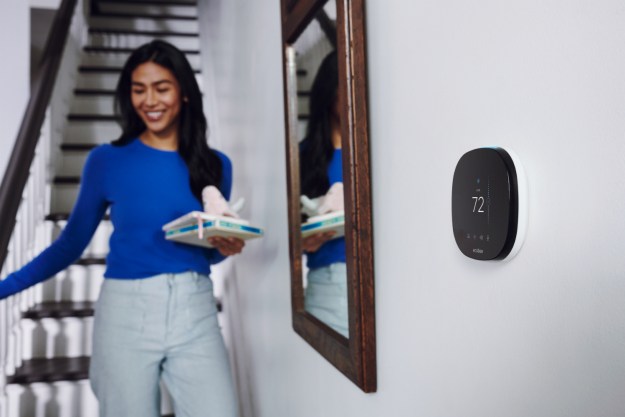Viio mirrors are available in three sizes, each with its own name. Vezzo is 24 inches by 32 inches, Vero is a 30-inch-diameter round mirror, and Vetta, the largest of the three, measures 24 inches by 64inches. All three have the same integrated functions. Each mirror style has a solid wood backing, automated anti-fogging, and can operate via battery power or a permanent plug in the back.
M
The mirrors have LED surround lighting and can play music or audio books through speakers on each side of the mirror via an audio source plugged into a standard jack or connected via Bluetooth 4.0. With the mirror’s integrated microphone and speakers, you can also use Viio mirrors for hands-free phone calls while you get ready in the bathroom or just hang out in the room where the mirror is hanging.
The Veent promises to be the “most intelligent room ventilation fan ever made.” Moisture sensors will turn on the fan at humidity levels you configure via a smartphone app. According to the company website the Veent is designed to produce minimal sound along with maximum airflow while automatically keeping the humidity from getting too high.
You can set the airflow from 40 to 140 cubic feet per minute (CFM) and control the sound level. The Veent does double as a smartphone-controlled light fixture. You can configure it as a normal LED white room light or as a night light a choice of six colors. The Veent includes a three-button wall switch that fits in a conventional switch outlet.
The Veent smart fan and Viio connected mirrors can be purchased on their respective websites. Veent fans will be available at Canadian Lowe’s and Home Depot stores in 2017. Viio mirrors are available now in select Home Depot, Best Buy, and Lowe’s stores in Canada and will be in U.S. Home Depot and Lowe’s stores later in 2017.
Editors' Recommendations
- The 5 best smart ceiling fans for your home in 2024
- Fluid One gives you point-and-click control of your smart home, from your smartphone
- 7 ways to prep your smart home before you go on vacation
- Peloton Guide lets you monitor your form while strength training
- NordicTrack iSelect dumbbells let you customize your workout with Alexa



